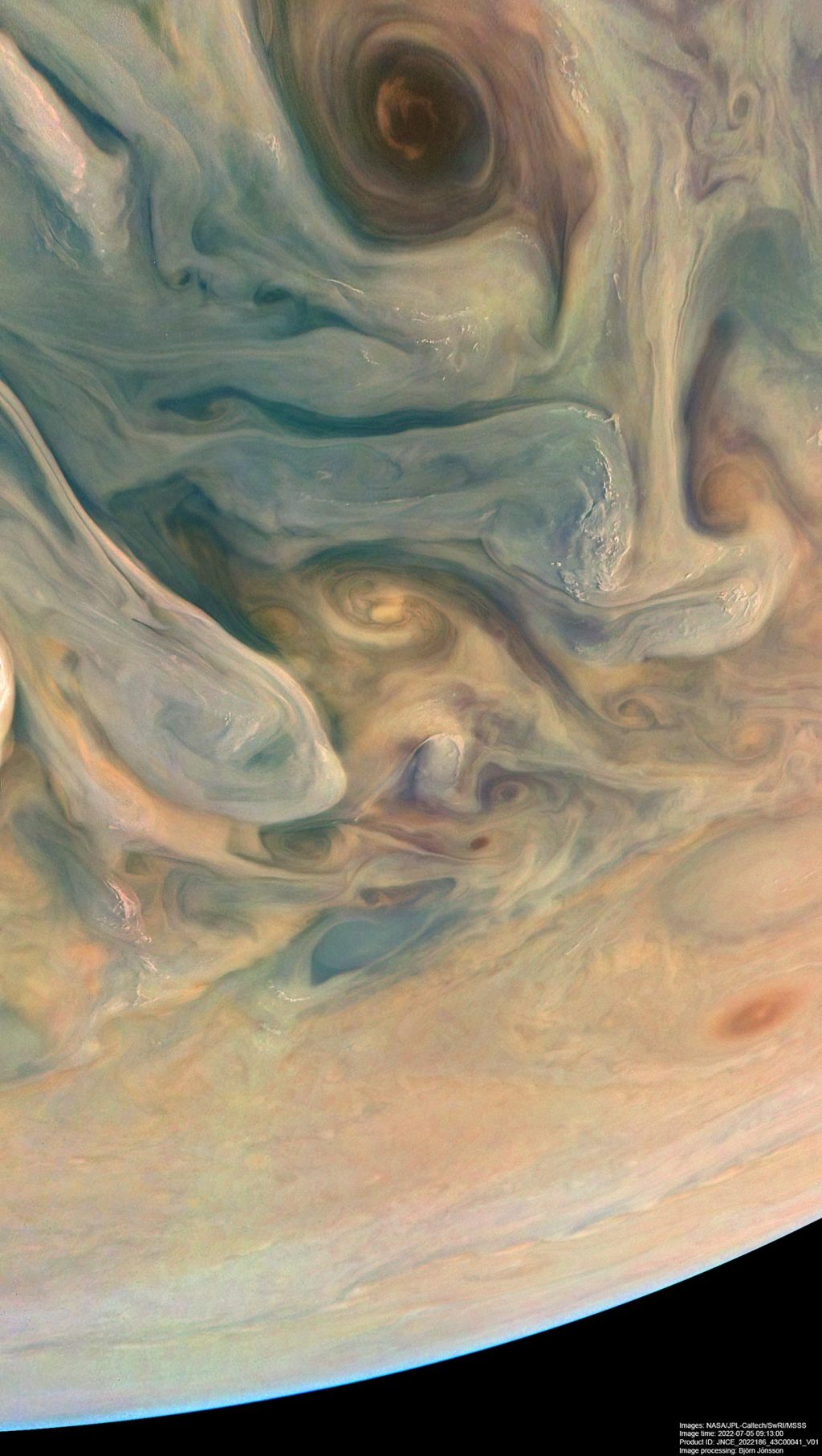
The image has been processed to depict the approximate colors that the human eye will see from Juno’s point of view. Credit: Image data: NASA/JPL-Caltech/SwRI/MSSS Image processing by Björn Jónsson © CC NC SA
Jupiter’s clouds on July 5, 2022, as it completed its 43rd close flyby of the giant planet.
Citizen scientist Björn Jónsson from Iceland created these two images using raw data from the JunoCam instrument aboard the spacecraft. Juno was about 3,300 miles (5,300 kilometers) above Jupiter’s cloud tops, at a latitude of about 50 degrees at the time the raw image was taken. North is up. At that moment, the spacecraft was traveling at around 130,000 mph (209,000 kilometers per hour) relative to the planet.

The second image comes from the same raw data, but in this case, Jónsson digitally processed it to increase both the color saturation and contrast to sharpen small-scale features and to reduce compression artifacts and noise that typically appear in raw images. Credit: Image data: NASA/JPL-Caltech/SwRI/MSSS, Image processing by Björn Jónsson © CC NC SA
The first image (top of page) was processed to portray the approximate colors that the human eye would see from the vantage point of the Juno spacecraft. The second image (above) also comes from the same raw data. However, in this case, Jónsson digitally processed it to increase both the color saturation and contrast to sharpen small-scale features and to reduce compression artifacts and noise that typically appear in raw images. This results in an image that clearly reveals some of the most intriguing aspects of Jupiter’s atmosphere, including color variation that results from differing chemical composition, the three-dimensional nature of Jupiter’s swirling vortices, and the small, bright “pop-up” clouds that form in the higher parts of the atmosphere.
JunoCam’s raw images are available for the public to peruse and process into image products. More information about NASA citizen science can be found at https://science.nasa.gov/citizenscience and https://www.nasa.gov/solve/opportunities/citizenscience.




/cdn.vox-cdn.com/uploads/chorus_asset/file/25550621/voultar_snes2.jpg)


More Stories
Watch a Massive X-Class Solar Explosion From a Sunspot Facing Earth (Video)
New Study Challenges Mantle Oxidation Theory
The theory says that complex life on Earth may be much older than previously thought.